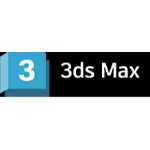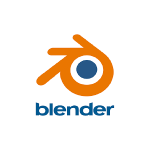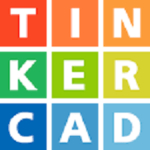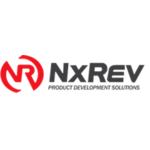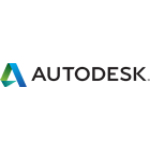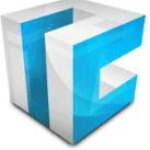List of Best 3D Modeling Software
Showing 10 of 76 productsAdobe Creative Cloud is a solution for all your creative needs. This versatile suite includes a wide range of powerful software and tools that allow you to bring your creative ideas to life with ease. Say goodbye to limitations and hello to endless p...Read Adobe Creative Cloud Reviews
3ds Max is a and versatile 3D modeling and animation software that has been a leading tool in the entertainment, architecture, and product design industries for over 30 years. From creating stunning visual effects to designing intricate 3D structures...Read 3ds Max Reviews
MAXON Cinema 4D is a 3D modeling, animation, and rendering software used by creative professionals all over the world. With its intuitive interface, customizable tools, and dynamic workflows, it allows artists to bring their ideas to life with ease a...Read MAXON Cinema 4D Reviews
Modo 3D is a and versatile 3D modeling and animation software designed for artists and designers. With a user-friendly interface and robust tools, Modo 3D allows you to bring your creative visions to life with ease. Discover the endless possibilities...Read Modo 3D Reviews
Blender is a 3D animation software. Developed by a community of passionate artists and programmers, Blender offers a wide range of features and tools for creating stunning visual effects, 3D models, and animations. With its user-friendly interface an...Read Blender Reviews
Autodesk Maya is a 3D animation and modeling software used by professionals in the film, television, and gaming industries. With its powerful tools functionality, Maya allows artists to bring their ideas to life in stunning detail and realism. Get re...Read Autodesk Maya Reviews
Tinkercad is a and user-friendly 3D modeling software designed for beginners and professionals alike. It allows users to bring their ideas to life by creating 3D models, prototypes, and even animations. With cloud-based storage tools, Tinkercad makes...Read Tinkercad Reviews
Creo is a design software created by PTC, known for its ease of use capabilities. With a user-friendly interface and extensive tools, Creo allows designers and engineers to bring their ideas to life in a seamless is a manner. It is the perfect tool f...Read Creo Reviews
Autodesk Architecture is a software designed to revolutionize the way architects conceptualize, design, and construct buildings. With its advanced features interface, it allows for efficient and accurate creation of architectural projects. Say goodby...Read Autodesk Architecture Reviews
SelfCAD is a and user-friendly 3D modeling and designing software that is perfect for beginners and professionals alike. With its intuitive interface and extensive features, SelfCAD offers a seamless experience for creating and editing 3D designs. Wh...Read SelfCAD Reviews
- What Is 3D Modeling Software?
- Top Reasons Why Businesses Need 3D Modeling Software?
- What Are the Top Key Features of 3D Modeling Software?
- What Are the Top Benefits of 3D Modeling Software?
- What Are the Steps to Choose the Right 3D Modeling Software?
- What Are the Types of 3D Modeling Software for Different Industries?
- What Are the Technology Trends for Best 3D Modeling Software?
- What Are the Deployment Options for 3D Modeling Software?
What Is 3D Modeling Software?
3D modeling software refers to a computer application utilized for the purpose of generating three-dimensional models. This technology allows users to create three-dimensional models of items, which may be observed from various perspectives within a virtual environment. This technology finds applications across several industries, encompassing animation, motion graphics, gaming, prototyping, product design, and architecture. The best 3D modeling software has the capability to efficiently produce models by utilizing diverse sources such as clay, photographs, drawings, and other three-dimensional items.
Additionally, it can be utilized to construct intricate models or novel ideas for objects that have yet to be realized in the tangible realm. The utilization of 3d modeling software for 3d printing facilitates the construction of three-dimensional items by the amalgamation of various shapes, hence enabling users to fashion structures using an assortment of materials like clay, rock, stone, metal, and wood.
Once the construction of the model is complete, it can undergo the process of rendering using various materials and textures in order to get a visually authentic appearance. Various techniques can be employed to alter 3D models, enabling the creation of aesthetically pleasing and intricately crafted items or designs. The user has the option to export the model into many formats, including STL files that are compatible with 3D printers, as well as PDF files. best 3d modeling software offers customers a rapid and effective means of generating three-dimensional objects.
This technology proves to be particularly advantageous in sectors such as aerospace, automotive, engineering, cinematography, and video game production. Professionals are able to efficiently generate realistic models and prototype designs at a reduced timeframe and cost with the utilization of the top 3D modeling software. This approach facilitates the optimization of the design process, resulting in a reduction in both the duration of development and associated expenses.
Top Reasons Why Businesses Need 3D Modeling Software?
1. The utilization of 3D modeling software facilitates the generation of accurate three-dimensional representations of items or objects by enterprises. These models serve many purposes such as prototyping, testing, and analysis.
2. The utilization of this software facilitates the expeditious enhancement and optimization of designs for various items or things through the incorporation of intricate design components, including curves and texturing.
3. The utilization of the best 3D modeling software enables the generation of animated sequences, which serve the purpose of visually illustrating the appearance of a product in a realistic manner.
4. The utilization of good 3d modeling software has significant importance for organizations operating within the engineering and architecture sectors, as it facilitates the creation and advancement of intricate designs and constructions.
5. The utilization of it enables firms to conduct simulations that assess the performance of a product or object under various physical environmental circumstances, such as wind resistance and temperature.
6. The utilization of the top 3D modeling software facilitates the expeditious and precise development and production of prototypes within enterprises, employing meticulous measurements generated during the modeling procedure.
7. The utilization of easy 3d modeling software is advantageous in the context of viewing a product or object within a virtual environment, before its actual construction.
8. The utilization of 3d modeling software for 3d printing in sales and marketing endeavors becomes advantageous for organizations, as it enables the creation of lifelike 3D representations of products, hence enhancing their attractiveness to certain target demographics.
9. 3D modeling software facilitates the creation of coherent diagrams and images that depict answers to intricate engineering challenges, enabling firms to effectively communicate their proposed solutions.
10. The utilization of 3d modeling software online enables organizations to effectively convey their concepts and designs to prospective customers.
11. The utilization of it holds significant importance across several industries such as medical, defense, transportation, and others. This software plays a crucial role in facilitating the creation and manufacturing of intricate technological models that possess a high level of complexity.
12. The utilization of this facilitates the expeditious and effective creation, modification, and integration of designs inside company operations.
13. The utilization of simple 3d modeling software allows firms to transform pre-existing 2D designs into 3D representations without necessitating the acquisition of intricate 3D modeling skills.
14. The utilization of 3D modeling software expedites the process of product development by enabling businesses to rectify any inaccuracies in models before the production of a tangible prototype.
15. The utilization of the best online 3d modeling software is of great significance in the advancement of virtual reality designs and simulations.
What Are the Top Key Features of 3D Modeling Software?
The top key features of 3D modeling software include the following:
1. Parametric modeling: The functionality enables users to rapidly and expeditiously generate intricate forms and objects by modifying parameters inside the model.
2. Mesh modeling: The utilization of mesh modeling facilitates the generation of intricate organic forms, allowing users to achieve a high level of detail in their designs.
3. Boolean operations: This functionality enables the user to operate addition or subtraction on two distinct items, resulting in the creation of a unified object.
4. Proximity-based modeling: This functionality facilitates users in efficiently and precisely generating an entity at a specified proximity from another entity.
5. Particle-based modeling: This functionality allows users to generate simulations of authentic entities, such as particles of dust, smoke, and various other physical occurrences.
6. Animations: The utilization of animation features enables the manipulation of items within a given scene, hence facilitating the creation of a dynamic user experience.
7. AI-supported features: Cutting-edge artificial intelligence capabilities, such as facial recognition, sophisticated robotics simulations, and automated asset production, contribute significantly to the realistic representation and animation of three-dimensional models.
8. Texturing tools: These features enable users to enhance the level of intricacy in their models by using a diverse range of textures, such as those resembling actual stone, wood, fabric, and various others.
9. Lighting controls: This functionality enables the user to modify the illumination of a certain setting in order to attain a specific outcome.
10. Image rendering: The utilization of rendering capabilities facilitates the production of a visually accurate representation of a three-dimensional model, closely resembling a photograph.
What Are the Top Benefits of 3D Modeling Software?
1. Increased Efficiency: The utilization of 3D modeling software enables designers to expedite the creation of sophisticated designs through the utilization of modern tools for measurement, calculation, and the addition or removal of features. The implementation of this approach significantly decreases the duration required for design processes and enhances overall operational effectiveness.
2. Automated Features: The automation of several functionalities, such as Boolean operations and surface meshing, has been incorporated into contemporary top 3D modeling software, resulting in less reliance on user input.
3. Increased Accuracy: Designers have the ability to generate accurate and intricate designs through the utilization of sophisticated digital tools and precise measurements. Attaining such a level of precision poses challenges when using conventional drawing techniques.
4. Rendering Technology: The best 3d modeling software encompasses a range of tools that facilitate the creation of visually accurate three-dimensional representations of a given design. This technique has the capability to generate visuals and animations that closely resemble real-life photographs.
5. Better Collaboration: The utilization of 3d modeling software for 3d printing facilitates enhanced collaboration among teams, hence streamlining the decision-making process and facilitating the implementation of changes. Additionally, this functionality serves to mitigate conflicts that may arise during the design-build process.
6. Increased Flexibility: Designers that utilize 3D software possess the capability to efficiently and effortlessly alter pre-existing designs or generate wholly novel ones, so benefiting from a high degree of flexibility in their creative process. The inherent flexibility of their approach enables them to efficiently and effectively develop and refine their designs at a rapid pace.
7. Quick Prototyping: The utilization of three-dimensional (3D) models facilitates the process of transforming abstract notions into tangible objects through the means of printing or uploading.
What Are the Steps to Choose the Right 3D Modeling Software?
When choosing the right 3D modeling software, several steps can help you make the perfect decision.
1. Initially, it is essential to ascertain the specific sort of 3D modeling that is necessary for your project. This may involve selecting a surface modeling software that facilitates product development and visualization, opting for a sculpting tool that enables the production of organic shapes, or considering a mobile application that allows for entry into the augmented reality/virtual reality domain.
2. Furthermore, it is important to take into account any user requirements that may be present, ranging from the integration of cloud services to ensuring compatibility with specific devices.
3. Consider the intricacy of the current undertaking. Is a basic, introductory program sufficient or is a more advanced solution required?
4. It is advisable to take into account one's financial resources and engage in a comprehensive evaluation of professional opinions and feedback from prior users of the software, if available.
5. After the process of narrowing down the available options, it is advisable to experiment with multiple programs in order to determine the most suitable one that aligns with your specific requirements. By adhering to the prescribed sequence of actions, one can effectively ascertain the optimal best 3D modeling software that aligns with the specific requirements of their project.
What Are the Types of 3D Modeling Software for Different Industries?
1. Architecture and Civil Engineering: The software applications Autodesk Revit, Autodesk AutoCAD, Autodesk 3ds Max, PoseRay, and Blender are commonly used in the field of computer-aided design and computer graphics.
2. Animation and Media: The software applications Autodesk Maya, Autodesk 3ds Max, Cinema 4D, Blender, and Houdini are commonly used in the field of computer graphics and animation.
3. Product Design and Manufacturing: The software applications Pro/Engineer Wildfire, CATIA, AutoCAD Mechanical, SolidWorks, and OnShape are commonly utilized in the field of engineering.
4. Fashion, Textiles, and Jewelry Design: Materialise Magics, Optitex, CLO3D, Optitex.
5. Industrial Design: Autodesk Fusion 360, Solidworks, TinkerCAD, Autodesk Inventor 6. Gaming and Virtual Reality: Blender, Autodesk 3ds Max, CryEngine, Unity, Unreal Engine 4 7. Interior Design: Autodesk AutoCAD, SketchUp, Autodesk 3ds Max, Blender
What Are the Technology Trends for Best 3D Modeling Software?
1. Real-Time Rendering & Visualisation Technology: The progress in real-time rendering technology has led to an enhanced capability of 3D modeling software to provide photorealistic representations of the model's appearance in the physical realm. This approach improves the precision of 3D modeling, resulting in models that possess a heightened sense of realism in terms of appearance and tactile qualities.
2. Cloud-Based Technologies: Numerous 3d modeling software for 3d printing offer the capability for numerous users to collaborate on cloud-based platforms. This feature enables the seamless exchange of work across multiple designers, while also granting accessibility to 3D modeling tools regardless of geographical location.
3. Artificial Intelligence: The utilization of artificial intelligence (AI) tools is increasingly prominent in the realm of best 3d modeling software. AI-powered technologies can automate procedural tasks, enabling the creation of optimized textures, materials, and lighting for three-dimensional (3D) models.
The reduction in the duration necessary for the construction of 3D models and the enhancement of their realism are achieved using this approach.
What Are the Deployment Options for 3D Modeling Software?
The utilization of 3D modeling software is prevalent in the generation of digital graphics across several domains, including but not limited to gaming, animation, engineering, and scientific visualization. The available deployment options for the best 3D modeling software are contingent upon the specific type of program being utilized.
Typical deployment options encompass the utilization of desktop software installed on local devices, mobile applications, cloud-based solutions, and web software. Desktop software has the capability to be deployed on a wide range of hardware configurations and typically exhibits superior features and performance.
Mobile applications are specifically developed to be installed on handheld devices such as smartphones and tablets. In comparison to desktop software, these apps typically offer a more restricted range of features and capabilities. Cloud-based solutions are characterized by their user-friendly nature and remote management capabilities, enabling users to access and utilize these solutions from any location.
Additionally, these solutions have the advantage of providing backups and automatic upgrades. Online software is accessible through a web browser and offers comprehensive functionality and data access, eliminating the requirement for local installation. This attribute contributes to their widespread adoption in collaborative endeavors.

